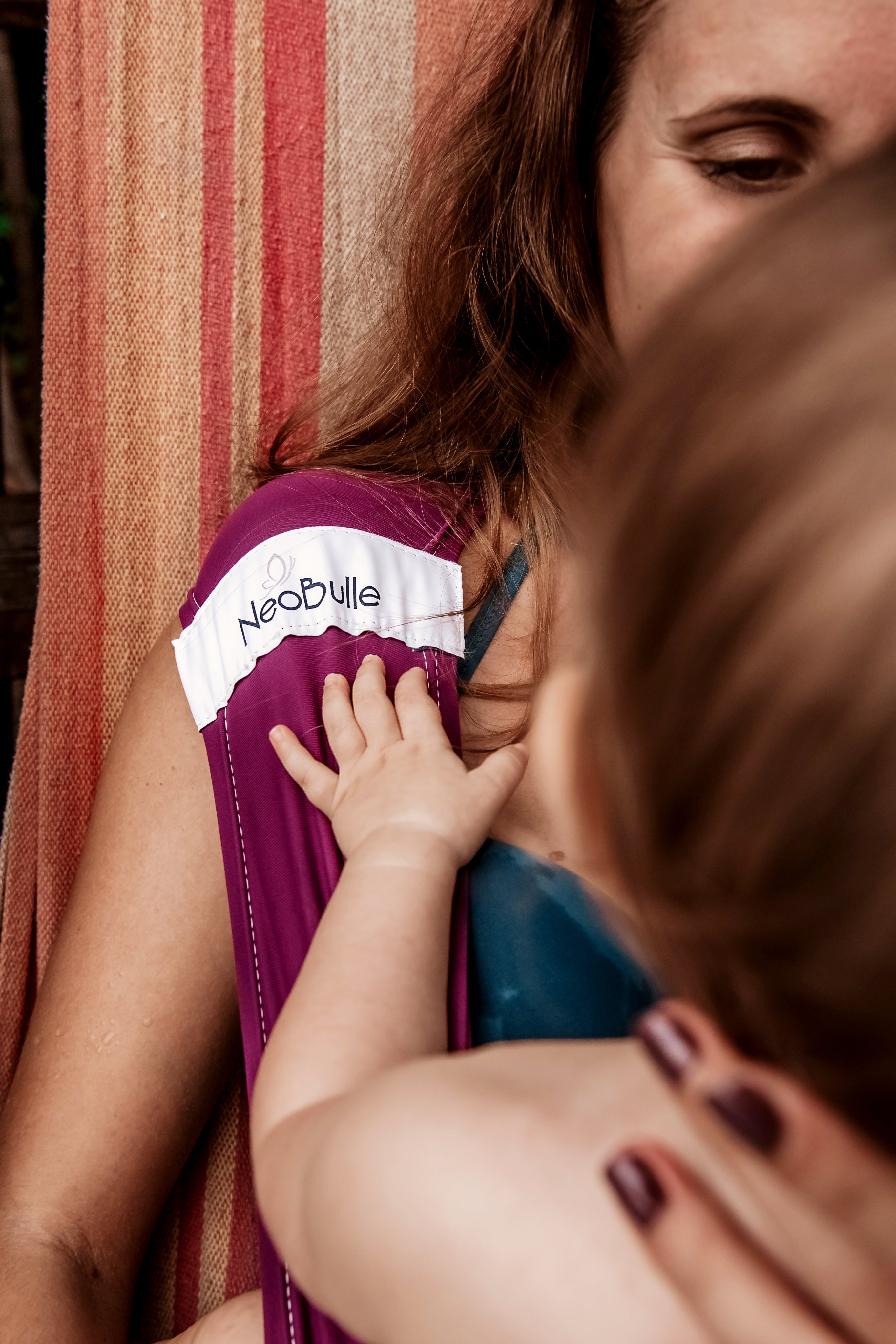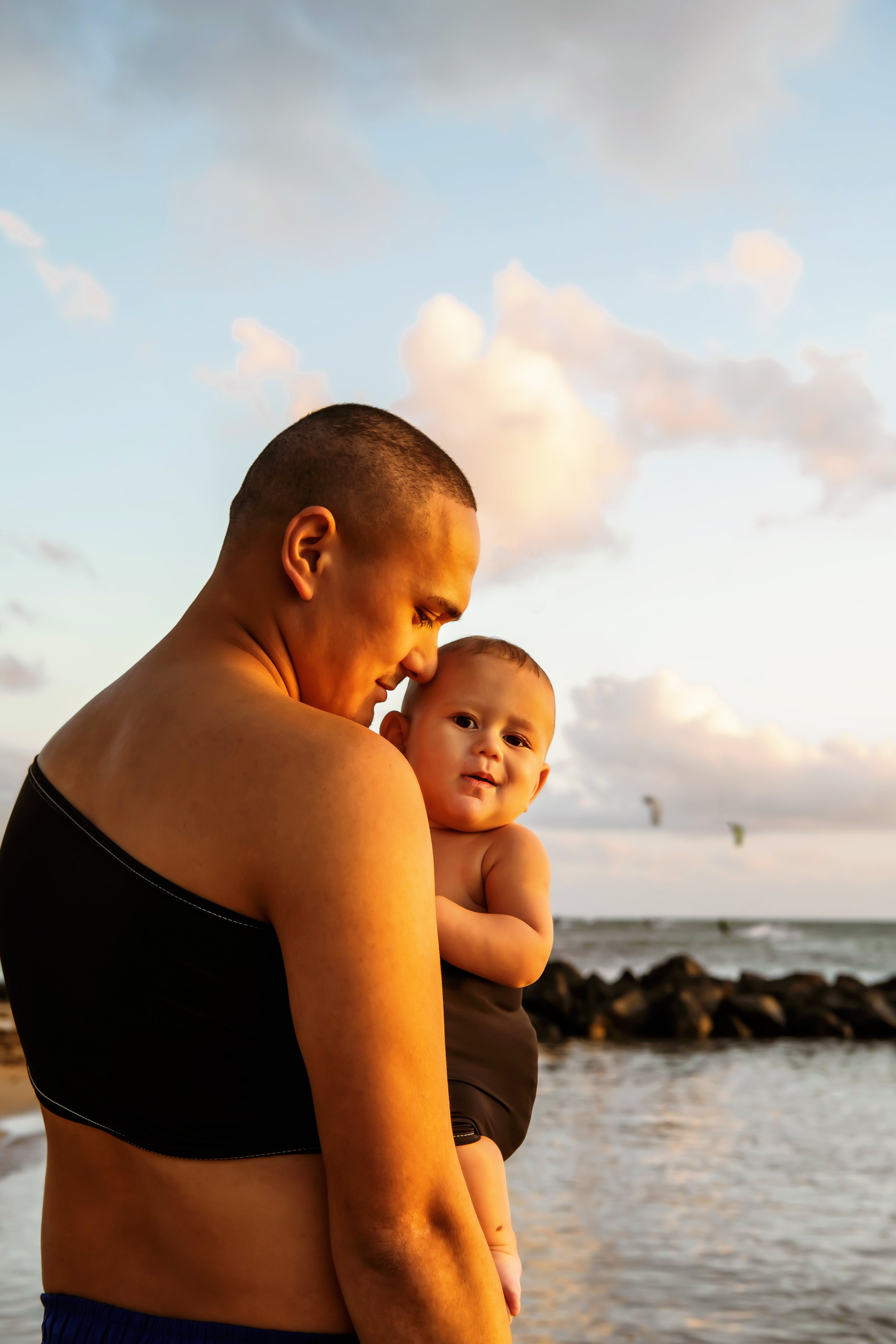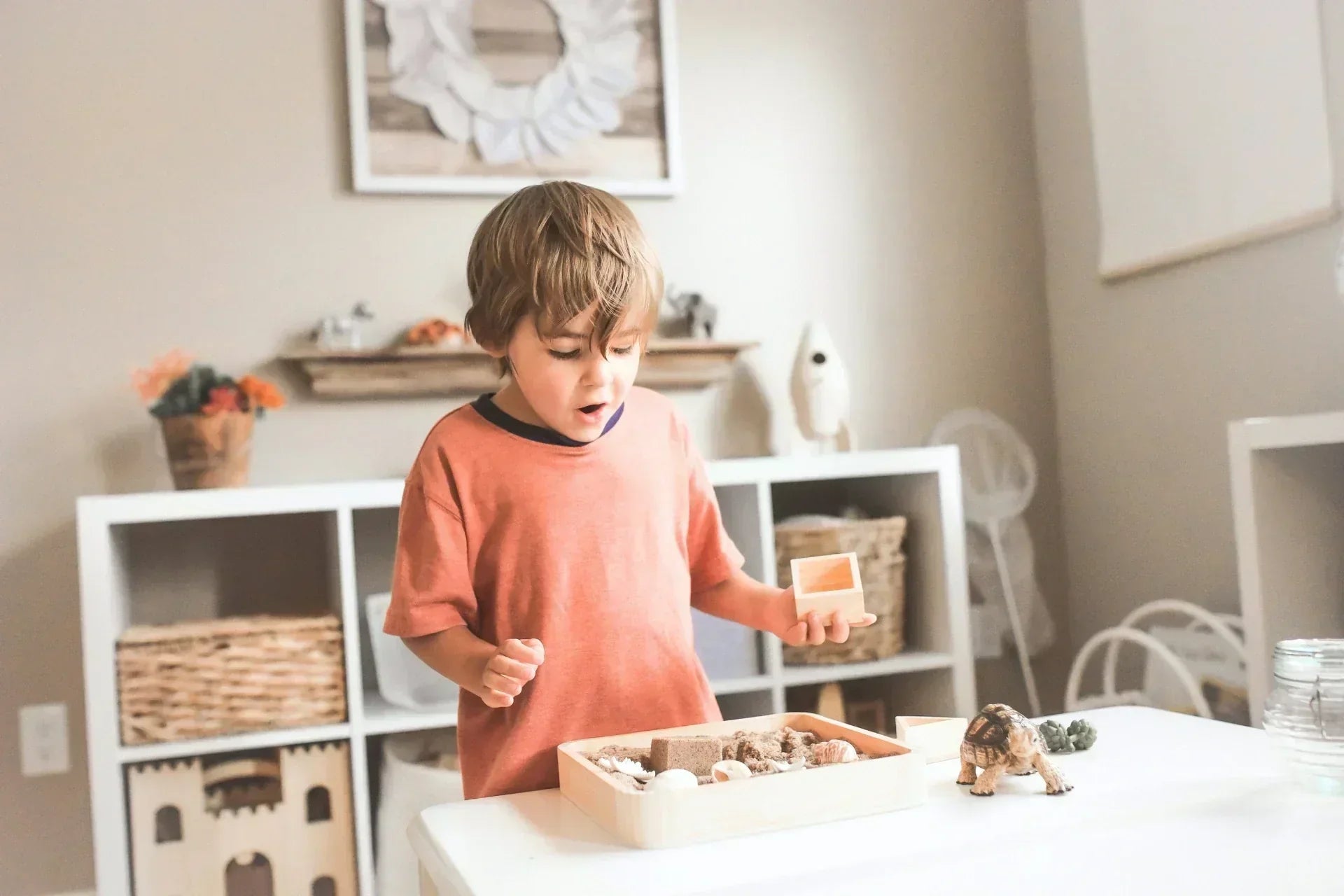Too hot? Too cold? It's the eternal question of ALL parents, which becomes a reality until the child is old enough to clearly express how they feel (and where, generally, you don't believe them anyway, but that's another topic...).
The most obvious solution is to favor contact and proximity with your little one, and therefore carry them.
But how to cover them and be sure they won't be cold when temperatures drop? We offer you a brief overview of best practices.
Dress baby in the baby carrier
It is always recommended to dress your baby normally, as indoors, remembering that the carrier counts as clothing: if your little one has a small undershirt on the floor on their mat, for example, you should remove it in the carrier, because the material of the system around them replaces it. When you want to go outside, you dress more warmly, but around the baby and yourself, not each individually.
The first reflex is often to want to put a jumpsuit (pilot suit) or a coat on your child. This raises several problems:
- It is very uncomfortable for your baby, especially if you try to maintain a physiological position: imagine sitting, crouched in a ski suit, and you'll get a little preview!
- It's quite stiff: it generally prevents your baby from bringing their hands to their mouth, which they need to calm and reassure themselves. This is also true in a stroller!
- It creates significant layers at the joints, which can especially hinder proper blood circulation in the legs
- It can hinder the proper clearance of the airways by creating thickness at the throat
- It prevents proper adjustment of carrying systems and can pose safety issues (increased risk of falling, especially in a sling)
- And most importantly: since the baby is farther from you, they also cool down much more because they no longer benefit from your body heat! Which is totally counterproductive.
Carrying over your coat is also discouraged:
- Impossible to make a proper installation this way
- Risk of injury from buttons and zippers
- And like with the jumpsuit: the farther the baby is from you, the easier they cool down.
The idea is then to have your little heart dressed in normal indoor clothes, possibly a thin undershirt if it's really -10°C, and then:
- Cover what extends beyond the baby carrier: hat, slippers/leggings (hands are against you and do not get cold)
- Put on your usual coat and we position a carrying blanket to make the connection on the baby (wide coats tend to cover the respiratory pathways).
The advantage of doing so is that in case of passing through warmer places (such as a store), it allows you to easily uncover your baby and prevent him from "cooking" in his suit and crying while you finish your shopping.
Note that thick clothing is also discouraged in cars:
- The harness of the car seat or shell must be very snug on the baby; with a suit, it adjusts to the thickness, but in case of shock, it flattens and the child can pass through the harness, so he is no longer protected
- The car's heating quickly warms the interior and your baby will be way too hot.
NB: Neobulle's carrying blanket is designed to be used also in the car, making it a go-to tool for everyday logistics!
Clear the airways
The fear of cold should not make you forget the basic safety rules; clearing the airways is at the top of the list.
It is not uncommon in winter to see parents pull up the blanket or their coat all the way to the top of their toddler’s head, to be sure that cold air will not bother him.
In fact, cold air won't bother him, but the air in general will not circulate! And it’s likely you’ve noticed that he needs some air to breathe.
Like with the baby carrier, the blanket or coat should reach up as high as the back of the neck of your child, leaving the face visible and clear. A hat or a hood is more than enough to protect his head.
"Put on your little woolly sweater, you'll catch a cold!"
In quite general terms, behind the fear of cold is actually the fear that the child won't get sick, largely fueled by popular beliefs and the injunctions to "dress the baby well because they get cold easily, you know".
On one hand, overbundling is not better than underbundling. And most importantly, you don’t get sick because of the cold, but because of pathogenic elements in the environment (viruses, etc...).
If cold can slightly sensitize the mucous membranes and humidity can promote germ proliferation, it is not directly responsible for falling ill. You could run naked in the snow, for example; if your path did not cross with a virus, you would stay healthy (plus cold preserves). ) !
Avoid passing from arm to arm and kisses, airing out the home, washing hands well, and wearing a mask if you are ill will be much more effective measures to protect your little one from winter ailments (bronchiolitis, for example)!
Singing in the rain

Carrying your baby also makes outings easier in rainy weather.
We dedicate this paragraph to those who have already had to urgently figure out how to install the rain cover on the stroller in pouring rain, to those who had to mop up their flooded entryway with water dripping from the rain cover and mud from the wheels, and to those who found themselves pushing the stroller in a deluge without a free hand for an umbrella. We know you know! (Others, we leave it to your imagination)
With just an umbrella, you can continue your journeys calmly and dry !
Carrying and winter activities
Mountain activities, does that appeal to you? Yes, but with a good baby carrier!
Many winter activities are accessible when you carry your baby. Of course, we advise against climbing Mont-Blanc, but a short walk or snowshoe hike is entirely possible !
The usual precautions are quite basic:
- Favor back carrying due to increased fall risks with front carrying
- Avoid a too long walk, especially if it is very cold (remember that your baby does not exert physical effort and cools down faster than you)
- Take small, regular breaks to move your baby a bit and ensure that their extremities do not get too cold. Feet, in particular, are very prone to frostbite. This risk is greatly reduced by using a physiological baby carrier and by the close proximity to the carrier (far from you in a child carrier with supports, the child cools down much faster !)
In case of extreme temperatures, you can opt for lightweight woolen clothing instead of cotton: soft and thin, they keep the baby warm without making them sweat or overheat, and allow freedom of movement and comfort.
You also appreciate carrying if you have clothes to retrieve from the snowfront (étonnantly, the wheels of the stroller roll much less well on snow).
In short, you understand that close to you, it is much easier to assess whether your child is hot or cold, and they better regulate their temperature.





